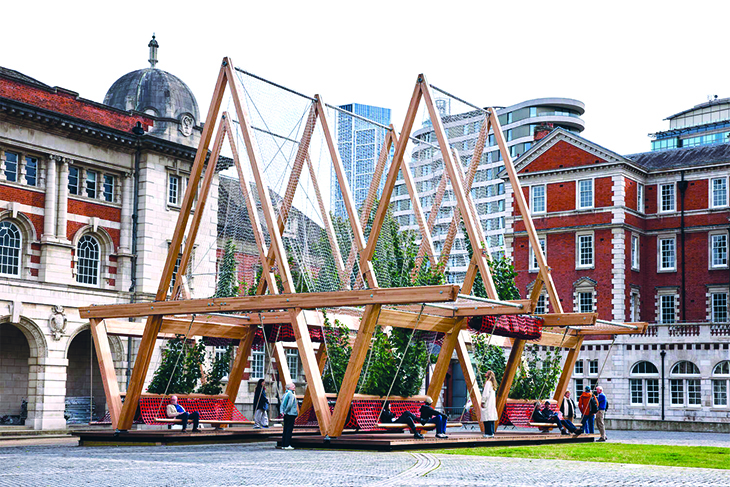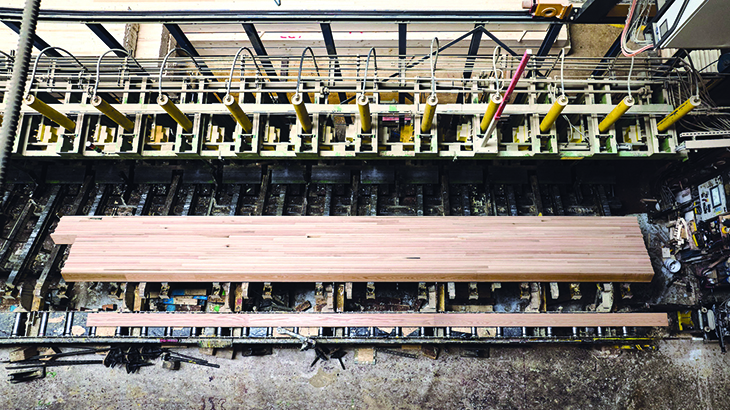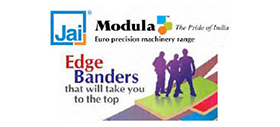Vert: the red-oak route to a cool-cool city

Tall sails covered with climbing plants fix carbon dioxide, create cooling shade and offer sheltered spaces for people. Images: Diez Office & Petr Krejci
With temperatures rising and heat waves set to intensify, coupled with dwindling biodiversity in cities across the world, there is an urgent need for a rethink in urban development.
Devised in a three-way collaboration between Stefan Diez’s industrial design studio, Diez Office, the American Hardwood Export Council (AHEC), and urban greening specialists OMCºC, Vert is an experimental proposition for a modular structure that can address both issues.
Unveiled at the Chelsea School of Art during London Design Festival last year, the project proposed a timber structure that helps to cool the city while integrating easily into its existing infrastructure.
Tall sails covered in climbing plants work to fix carbon dioxide in the air while creating areas of cooling shade – sheltered spaces for people to pause. Built from sustainable materials, Vert combines aesthetic appeal with tangible environmental benefits and represents a transformative approach to urban development.
Constructed from an engineered hardwood, red oak glulam, the structure consists of a series of timber triangles holding suspended biodegradable nets. These provide a framework for climbing plants, rooted in textile planters at the base of each net.
‘Greening machine’
The sails are greened with around 20 different plant species, creating a living ecosystem that enriches local biodiversity, serving as a habitat for essential insect populations, aesthetically enriches the urban landscape, and provides a sheltered space where visitors can gather and relax.
“The structure performs as a ‘greening machine’, while also making urban spaces more harmonious and pleasant to live in from an aesthetic point of view. We wanted Vert to break the monotony of our urban environment,” stated Stefan Diez, Director & Founder of Diez Office.
Over the last 15 years, AHEC has presented a host of experimental structural projects that showcase innovations in hardwood, such as hardwood cross-laminated timber (CLT). Vert continues this important work, this time focusing on highlighting the potential of red oak glue-laminated timber (glulam).
Diez Office had been working with OMCºC on their urban-greening solution that would reduce the carbon footprint of the city in the process. This is the role typically performed by trees, but in an era of acute climate change, climbing plants can be more effective as they grow many times faster, require less root space, and can be ‘harvested’ annually to be turned into bio-char, or recycled as raw material for the generation of energy.
The system combines AHEC’s timber knowledge with Studio Diez’s design expertise and OMC°C’s in-depth understanding of planting and irrigation technology, substrate performance, wind loads, and all the other technical details integral to the installation of the structure in public spaces.

AHEC’s focus this time was on highlighting the potential of red oak glue-laminated timber, being prepared in a factory.
Modular, flexible
Vert’s triangular shape is fundamental to the structure’s performance, allowing for a robust construction that uses minimal materials while being capable of resisting wind from all angles and absorbing the weight of the plants.
The triangle also lends itself to modularity, allowing for the system to be extended or to change in direction to suit different settings, without affecting the resistance of the structure.
In consultation with AHEC, Diez Office and OMC°C was able to identify red oak as the optimum material to use for the project, in terms of both structural performance and ecological credentials. The studio has experimented with the timber, first as a furniture material.
Despite red oak being sustainable and constituting a sizable 18% of North American hardwood forests, it is under-utilized in Europe. AHEC believes that increased use of red oak would reduce the stress on more widely used species and provide designers and customers with an enriched palette of timber materials to choose from.
Because red oak is denser and more stable than the standard construction timbers, less material is required, minimizing the visual prominence and footprint of the structure while maintaining high structural performance. The use of red oak also allows for more precise and long-lasting joints that enable the structure to be disassembled, moved, repaired and/or reassembled many more times than standard construction materials, supporting the longevity of the piece.
Engineering wood
The structure is predominantly made from red oak glulam – an engineered material created by finger jointing and laminating multiple grain-aligned layers of timber to enhance strength and stability. This enables the creation of large, structurally robust components suitable for modern construction.
Vert also features a decked floor beneath the sails made from thermally modified red oak. The chemical-free heat treatment alters the wood’s cellular structure, enhancing its durability and stability and increasing its resistance to decay and insect attacks, which makes it ideally suited to use outdoors in urban spaces such as this.
Vert makes a compelling case for the use of alternative wood materials to the limited library of species typically used in design and construction, encouraging greater diversity and resilience in the world’s forests.
Vert is projected to cool the surrounding airspace by as much as 8ºC, cast four times more shade than a 20-year-old tree, and produce as much biomass as an 80-year-old lime tree – all using climbing plants grown over the course of a single summer.
Comments

- In Silver Jubilee year, propelling growth remains the ‘mantra’
- PHANTOM HANDS
- ‘Fevicol Pro series is disruptive innovation’
- Furtech Show 2025 returns to Dubai in September
- Vert: the red-oak route to a cool-cool city
- Moisture? Measure twice, cut once!
- ‘Mirka has solutions for today, tomorrow, thereafter’
- On 50th anniversary, Ligna has more on offer
- Ukrainian designer redefines function through form
- New technology holds key to plywood industry survival
- Light on solid wood’s role in neuro-diverse spaces
- Evolving furniture demands require ace tooling
- Interzum 2025: rethinking resources
- CIFF Guangzhou opens in March in two phases
- Feria Hábitat València to expand into design
- WOFX 2024 was an unprecedented success
- HIFF 2025 promises to be bigger, better
- Event-Calendar
- Hettich’s ‘Magic lights’ are sheer brilliance
- Blum’s Revego systems for new space concepts
- Häfele’s MatrixBox combines functionality, sophistication
- How Protego’s oils protect exterior woodwork
- Ineos adds new ABS grade
- 2025 outlook for laminate industry
- A functional masterpiece of garden architecture
- European symposium highlights formaldehyde emission limits
- Egger adopts holistic approach to waste management
- Role of PUR adhesives in flat lamination
- Weber machines dovetail into best practices
- Hymmen’s smart2i facilitates digitally mapping production
- Schmalz compact ejectors lead ‘green’ automation
- Arnavi introduces Rema FX 250 table saw
- HAKS helps with design, tech, training
- Transforming woodworking with precision and efficiency
- ‘Cannot miss’: IWMMTA programme for industry
- Premium woodworking machinery from Jai
- High-tech drilling machine, planer sander from Woodtech
- Innovation defines Turakhia products
- Intelligent door production lines from Aadhunik
- Aryamman introduces two exquisite new décors
- Biesse’s Rover Edge revolutionises edge banding
- Check out versatile, durable Canadian wood species
- Expert slide machinery manufacturer from Taiwan
- Ebco to unveil more functional fittings
- Felder to showcase its range of woodworking machinery
- Frontaline has honeycomb core for shutters
- Holytek remains finger-jointing champion
- Homag to showcase its latest innovations
- ICA Pidilite: defining the future of wood coatings
- Innovator’s veneer splicers are UltiMate
- Premium quality steel belts from IPCO
- Precision solutions from Jacinth Machineries
- UV flatbed printers for furniture, interiors
- NextGen sanding tools from Mirka
- Pro-grade edge bander from OAV
- Check out the new Ornare ‘Surface’ range
- AM15K laminates meet new design challenges
- Richfill calibrated filler solves multiple problems
- SCM to present cutting-edge technologies
- Double-side tenoners, profilers from Technik
- Weinig’s Timbermat 5 is versatile planer, moulder
- Woodmaster’s machines ensure precision and efficiency
- Dieffenbacher’s ‘Osiris’ set to revolutionise fibreboard recycling
- Ebco Led lighting feature
- Jovas Tech Solutions – Redefining Woodworking Technology in India
- ITP: Crafting Excellence, Transforming Spaces
- “Greenlam Studio opens in Nashik”
- Dew River Group: Innovating Sustainable Wood Solutions
- Woodtech: Pioneering Advanced Woodworking Solutions in India




































